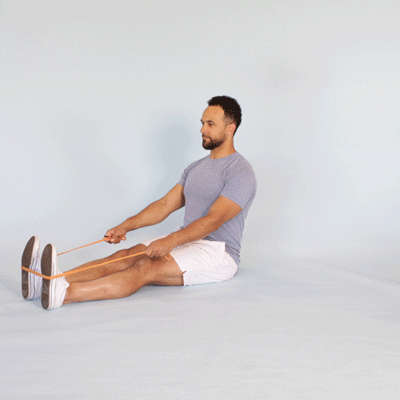
A beginner's workout should be focused on compound movements. This allows the muscles to do more work without being overworked. Between workouts, you should allow at least 48 hours for recovery. Beginners shouldn't attempt to work every muscle group separately. This will only hinder the response of the body to muscle building, and will also require longer recovery times. Complementary exercises are great for beginners as they target many muscle groups at the same time and can be done efficiently on the whole body.
10 best exercises for beginners
Beginners should avoid difficult moves and work on exercises that are full-body. You should also avoid overtraining your body and stop if you feel discomfort. To help your body recover from a workout, stretch it. To avoid injury, beginners should follow a good stretching program after a workout.
You don't need any equipment to do full-body exercises. They take about 30 minutes. They also help to reduce fat and calories, improve muscle strength and stability, and increase muscle tension. Full-body workouts make it easy to target multiple muscle types at once.
Focus on compound movements
It is important for beginners to concentrate on compound movements. These are movements that involve multiple major muscle groups. Because they engage multiple muscles simultaneously, compound movements are more efficient and save you time. Because they require coordination, good form and coordination, compound movements can be intimidating for newbies. These tips will help you improve your form, and teach you more compound movements.

One of the best full body exercises for beginners is the carry. You will work all major muscle group, including the shoulders and arms. You can either use dumbbells and a barbell for this exercise. Do this exercise standing up as it is the best way for you to hit all three of your deltoid heads.
You can avoid back pain by doing full-body exercise.
If you don’t know the right way to avoid full-body exercise for beginners, it can be quite painful. It's important to use the proper form and weights to prevent pain. A bench or wall can be used to support your body. While extending and lowering your body slowly, keep your head and shoulders off of the floor. This can reduce back pain.
Upper-body exercises are good for strengthening the large muscles of your back. You need to be careful not to put unnecessary strain on your back, muscles, ligaments and joints. Remember to perform at least six repetitions, and two sets of exercises. Also, make sure to do these exercises in a semi-reclined position if you have back pain.
Start with a 3-day programme
Do three days of total body exercises every week to get the most from your workout. This will allow for enough time to recover between sessions. A split of Monday, Wednesday, and Friday is the best. With a day off in-between, it will allow you to recover. The weekends are a time to relax and recover, so make sure to schedule those days off wisely. It is possible that you will have to miss a workout because of an unforeseen event. This is normal.
It is essential to warm up before you begin working out. To prevent injuries and issues with form, beginner lifters should be careful not to lift too much weight. Mobility exercises, which target hips, knees, and shoulders, are also important. Remember to maintain a correct form and not compare yourself to more experienced lifters. Remember, the longer you practice, the more you will improve.

Avoid repetitive motion injuries with full-body exercises
For beginners, full-body exercises can be used to prevent repetitive motion injuries. These injuries can cause pain and interfere with your daily life. Common examples of repetitive motion injuries include bursitis and tendinitis. These conditions result from inflammation of joints caused by repetitive motion exercises or excessive use. They can affect any joint, including the knee and ankle. Tennis elbow, runner’s knee and swimmer’s shoulder are other examples of repetitive motion injury.
Repetitive motion is the leading cause of RSIs. Repetitive movement is necessary for many different activities. Swimming every day can result in repetitive motion injuries. They should improve their form and strengthen the core muscles to avoid these injuries.
FAQ
Are there any exercises I should not do?
Before beginning any new workout program, consult your doctor. There are some people who have medical conditions or injuries that make it difficult to exercise. Also, some activities require special equipment or training. For example, swimming requires a swimsuit and pool access.
What happens if my sleep is not enough?
Lack of sleep means that your brain does not receive enough signals to regulate hormones. As a result, you may overeat and gain weight. Insufficient sleep can lead to stress, which can cause overeating.
What Are Resistance Training Exercises?
Resistance training includes using weights and other objects to perform specific movements. Lifting weights helps strengthen your arms, shoulders, chest and back, as well as your legs, hips, and core. Resistance training increases muscle mass, bone density, and overall strength.
Is it possible to gain weight by exercising?
Not at all. In fact, exercise helps you to maintain your current weight. You can build muscle mass and speed up your metabolism by exercising regularly. This means that you won't store so much fat.
Is it necessary to eat before exercising?
No. It's not necessary to eat anything before you work out. It is possible to snack on yogurt or fruit if you are hungry after your workout.
Can I eat when I'm working out?
Yes. Yes. You should choose low-calorie snacks, such as watermelon (carrots, celery), apples, bananas and grapes. These foods are rich in nutrients that will help you work out better.
Is exercise good for me?
Yes. Regular exercise will help to reduce weight by burning more calories. Regular exercise can help you burn calories even when your metabolism is not high.
Statistics
- An estimated 110,000 deaths per year could be prevented (cdc.gov)
- Globally, 81% of adolescents aged 11-17 years were insufficiently physically active in 2016. (who.int)
- Adolescent girls were less active than adolescent boys, with 85% vs. 78% not meeting WHO recommendations of at least 60 minutes of moderate to vigorous intensity physical activity per day. (who.int)
- In high-income countries, 26% of men and 35% of women were insufficiently physically active, as compared to 12% of men and 24% of women in low-income countries. (who.int)
External Links
How To
How to enjoy Zumba classes
There are many ways to enjoy Zumba class. It is important to pick the right option that suits your needs and goals.
Zumba classes may be attended at any Zumba Studio. Many studios are found in malls, shopping centres, schools and universities. There are many Zumba classes near you that can teach you how to dance and exercise. The best thing about attending a Zumba class is that it's free! There are no membership fees or monthly payments. You just need to show up and begin dancing.
Online Zumba can be enjoyed in a variety of ways. There are thousands on the internet that offer videos of Zumba classes for free. These videos can be viewed anywhere: at home, work, school, church or gym, as well as in hotels, restaurants, airport lounges, and malls. You can also download the videos to your computer and enjoy them whenever you wish.